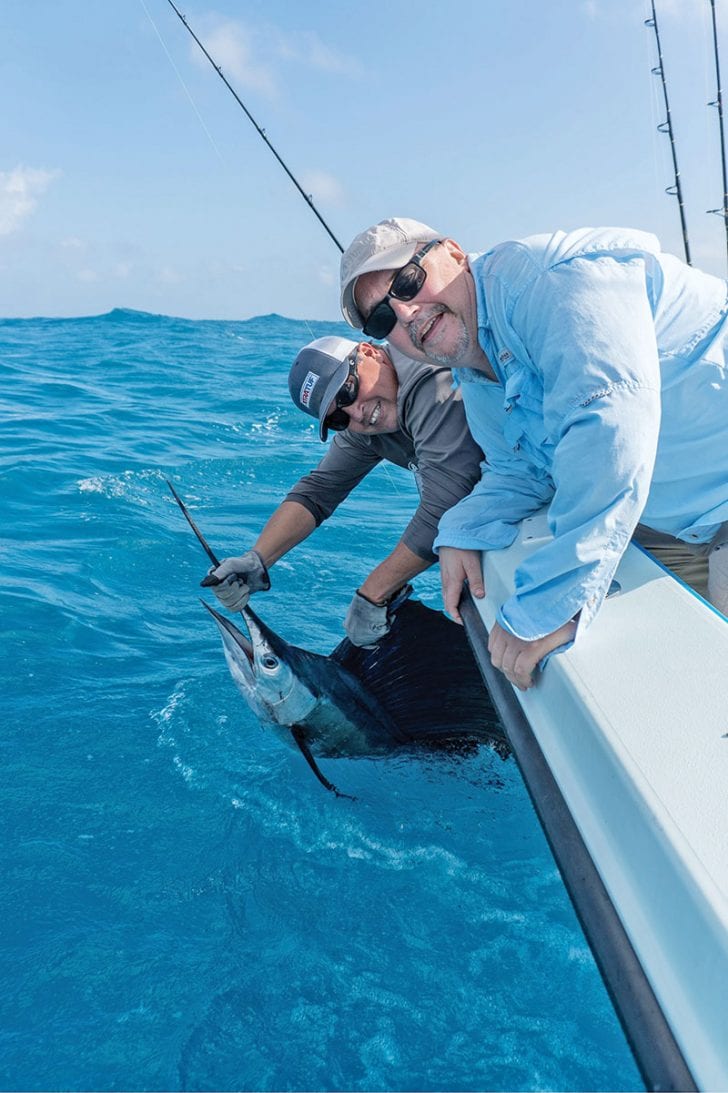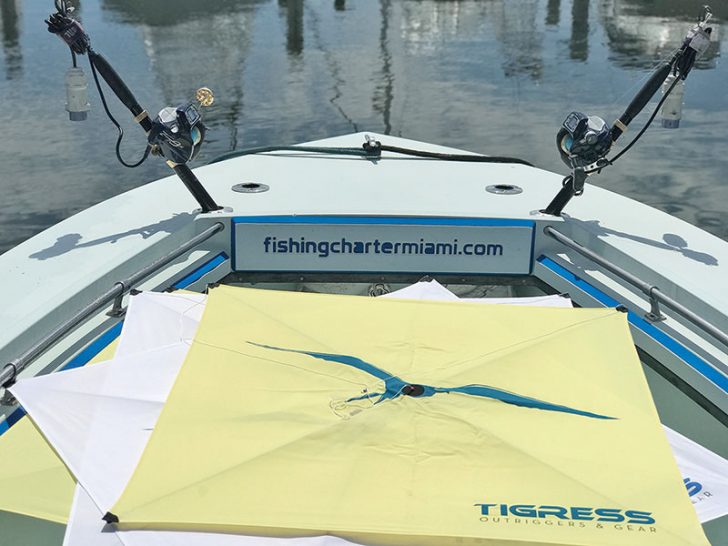
October marks the unofficial start of sailfish season for most charter and tournament fishermen. Although the action is only beginning, it is a great time to go through the boat and tackle to insure that you will be ready when the bite goes off. Exactly what do you need to check? Everything needs to be inspected and replaced if it isn’t up to snuff. Here is a short list of the most critical items on your to do list.

Your boat is the single most important piece of equipment. We all know that sailfish bite best when the weather is a bit “sporty”. Therefore, your motor, safety gear and electronics should be in tip top shape before venturing out. Now is also a great time to inspect all of your electric reel outlets and make sure that you have extra fuses, etc. It is also a good time to check batteries and battery connections. Another key component is your live well or live wells if you’re lucky enough to have more than one. Old or faulty pumps should be swapped out prior to trusting them with valuable live bait.
Once your boat is set you’ll want to shift your focus to your tackle. Make sure you have the correct kites for different wind conditions. If you are flying two or more kites simultaneously, make sure that you mark your right and left side kites. On my charter boat, we use Tigress kites because they go up effortlessly and fly steady even in gusty winds. Not only is having the right kites important but they must also kept clean in order to insure they fly as they are designed to.

accessible.
Another key piece of equipment is your electric kite reels. Most of these reels require some periodic maintenance at least once a year. If you’re using swivels on your reels, they should be replaced along with the braided line. A rusty swivel is asurefire way to lose a kite and set of release clips. Personally, I usually tie a small 12 inch balloon behind the kite as insurance in the event of a line or swivel failure.
Just like your kite reels should be respooled, all of your other rods and reels should be checked and loaded with fresh line. You may also want to go through all of your terminal tackle (hooks, swivels, beads, markers, leader, bridle bands, needles, and spare kite clips) just to name a few. Everyone rigs as they see fit, so exactly what you carry depends largely on your fishing style and budget.
Finally, you want to make sure that all of your tools are in working order and readily accessible. A combination plier and line cutter is probably the single most important tool on the boat. Other important tools include release leader cutters, hook cutters and a hand scale able to grip a large fish. Again, exactly what you carry on your boat may vary but these are some of the most useful items you may want to consider. Check out www.cudabrand.com for more information on the tools I use.
Well, that is pretty much it for right now. Don’t forget that I will be presenting more FREE SEMINARS at Bass Pro Shops in Miami. You can keep up with with everything by following us on FACEBOOK, Instagram, and Twitter. If you like watching some of the action, be sure to check out my YOUTUBE page for the latest video additions.
Tight Lines,
CAPT. ORLANDO MUNIZ
Nomad Fishing Charters
786-266-0171
www.fishingchartermiami.com
SPONSORS AND FRIENDS: Mercury Marine, Bass Pro Shops, Offshore Angler, Orca Coolers, SeaDek, Costa Del Mar, AquaNutrition and Baitmasters.

